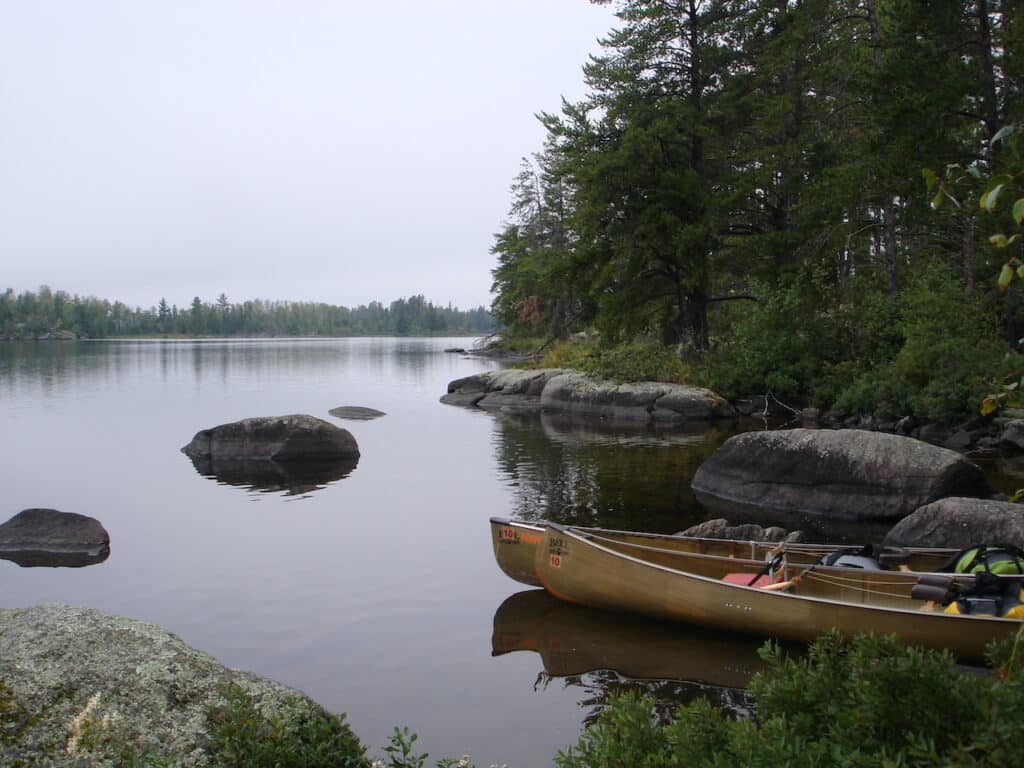
National magazine The New Yorker recently shared an audio report from the Boundary Waters Canoe Area Wilderness. The 15-minute segment was produced by noted Chicago author Alex Kotlowitz, who primarily documents urban life, having written several well-regarded nonfiction books about life in that city. But he says he has also been visiting the Boundary Waters wilderness for 40 years.
“I grew up in Manhattan and have spent most of my adult life in Chicago, so I think it’s fair to say I’m a city boy,” he wrote in 2019. “But I feel most at home on the water, traveling by canoe.”
On a trip earlier this summer, Kotlowitz brought an audio recorder along on a trip from the Gunflint Trail with friends.
“I came here with my recorder hoping to capture what so envelops me here,” he said. “The mournful wails of loons at night, the lakes telling stories, the skies shouting. It occurred to me that very first night that I can’t really capture on tape the true splendor of this place. It inhabits me. It lives inside me, and besides, how can you capture the signature of the Boundary Waters, its quietude?”
But the recording is full of canoe country sounds: loons wailing, of course, and white-throated sparrows singing, but also the dip of paddles in the water, and even the heavy breathing of someone laboring over a difficult portage.
It also covers the many facets of experiencing canoe country, from the challenges of portages, mosquitoes, and headwinds to the joys of solitude, beauty, and camaraderie. His crew’s loop took them to Ogishkemuncie and Tuscarora Lakes over the course of five days, and back out the mile-long portage leading from Tuscarora back toward their exit point.
One of Kotlowitz’s paddle partners was a Boundary Waters rookie, which also provided insights on the effects the wilderness can have when first experienced, compared to the precious familiarity of the author.
Kotlowitz also briefly touched on the subject of proposed copper-nickel mines at the edge of the BWCAW. The Twin Metals proposal is still in limbo as the Biden administration considers a 20-year mining ban in the wilderness watershed, and legal challenges continue.
“There was quite recently an effort to build a mine, a copper mine, along a river running into this wilderness,” he said. “A river that feeds these lakes. Mining copper can be particularly toxic. Should any of the toxins leak, it would irreparably contaminate the waters. Who, I ask, would want to risk scarring this place?
The author wrote about the mining issue for a story in The New Yorker in 2019, titled “Finding Stillness in Minnesota’s Boundary Waters in the Age of Trump.”
Kotlowitz is known for non-fiction that probes the complex problems facing American cities, particularly Chicago. His 1991 book, “There Are No Children Here” was a national bestseller and chosen by the New York Public Library as one of the 150 most important books of the 20th century.” His most recent book, “An American Summer,” was published in 2019 to critical acclaim.

